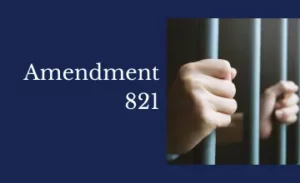The 2255 Writ is known by many names: a Motion to Vacate, 2255 Petition, 2255 Writ or sometimes it’s just called a Writ of Habeas Corpus.
Nevertheless, it is a critical tool to seek freedom from federal prison.
Section 2255 of the United States Code regulates the application and motion writs, so for the purpose of these blogs, I will refer to it as the 2255 Writ.
The 2255 Writ is a writ that you use regardless of your appellate status or how you plead in your case. You use the 2255 Writ for the purpose of attacking the constitutionality of your conviction.
This means that you can attack your conviction as unconstitutional because:
- You received ineffective assistance of counsel
- You had prosecutorial misconduct,
- You had due process violations in your case, o
- Or various other reason that your case was wrongfully handled in the criminal justice system.
The 2255 Writ is a great tool to use because you can also use it when you’ve pled guilty, you can use it when you’ve waived your right to appeal, and you can use it to add things to the record that weren’t already in the record.
Despite the fact that you may have pled guilty because your lawyer told you to, that there may have been no objections at your sentencing, and that you may have received a massive amount of years in your case, you can still pursue the 2255 Writ.
You can do this in part because you can challenge that lawyer as ineffective.
For example you might say, “I had ineffective assistance of counsel. My lawyer failed to advise me of these certain things, or failed to file a motion to suppress, and failed to challenge a guideline enhancement that was applied to my case.”
There are a number of things that you can do to attack a conviction on the basis of an unconstitutional conviction.
The 2255 has a one-year timeline from the time your conviction becomes final, so it’s advisable that you take action before then.
The most important thing to know is that there is something that you can pursue for yourself or on behalf of your loved one in prison.
About The Attorney
 Jacob Blizzard is board certified in both criminal law and criminal appellate law.
He regularly practices in the areas of state and federal criminal defense, criminal appeals, post conviction writs of habeas corpus.
In Texas, there are more than 100,000 attorneys licensed to practice, but only 7,450 are board certified.
In the entire State of Texas, as of the 2019 certification year, there were only 87 attorneys board certified in both criminal law and criminal appellate law, making Mr. Blizzard one of 0.087% of attorneys in Texas to hold both of those certifications.
Jacob Blizzard is board certified in both criminal law and criminal appellate law.
He regularly practices in the areas of state and federal criminal defense, criminal appeals, post conviction writs of habeas corpus.
In Texas, there are more than 100,000 attorneys licensed to practice, but only 7,450 are board certified.
In the entire State of Texas, as of the 2019 certification year, there were only 87 attorneys board certified in both criminal law and criminal appellate law, making Mr. Blizzard one of 0.087% of attorneys in Texas to hold both of those certifications.



